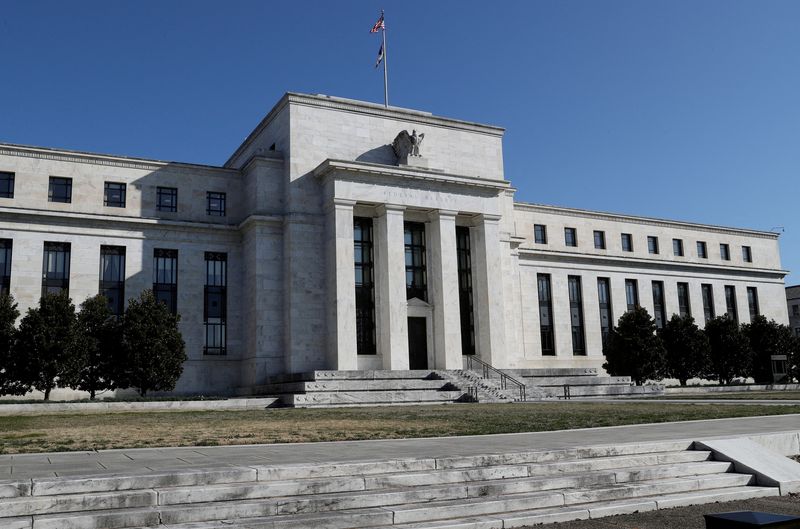US economic activity little changed in recent weeks, Fed survey shows
2023.04.19 14:22

© Reuters. FILE PHOTO: Federal Reserve Board building on Constitution Avenue is pictured in Washington, U.S., March 19, 2019. REUTERS/Leah Millis
By Ann Saphir
(Reuters) – U.S. economic activity was little changed in recent weeks as employment growth moderated somewhat and price increases appeared to slow, according to a Federal Reserve report published on Wednesday.
“Expectations for future growth were mostly unchanged as well; however, two districts saw outlooks deteriorate,” the U.S. central bank said in its latest “Beige Book” compendium of surveys and interviews conducted across its 12 districts through April 10. “Contacts expected further relief from input cost pressures but anticipated changing their prices more frequently compared to previous years.”
The Fed’s latest read on the state of the economy provides a snapshot of business, bank and worker conditions in the aftermath of the mid-March failure of two large regional banks that shook confidence in the U.S. financial sector and prompted an emergency response from regulators to contain the fallout.
Fed policymakers, meeting less than two weeks after that crisis, raised the benchmark overnight interest rate by just a quarter of a percentage point to the 4.75%-5.00% range despite what they continued to feel was unacceptably high inflation.
They also signaled they are nearing the end of what has been the most aggressive spate of policy tightening in 40 years, with most policymakers penciling one last quarter-percentage-point hike before what’s expected to be a prolonged holding period.
Although the initial banking stress appears to have waned, Fed policymakers say they are watching closely for signs that banks are pulling back on lending and tightening credit.
Such a pullback could slow the economy and inflation even more than the still-accumulating impact of their rate hikes, increasing the chance of an economic downturn and making a bigger rise in unemployment, now at the historically low level of 3.5%, more likely.








